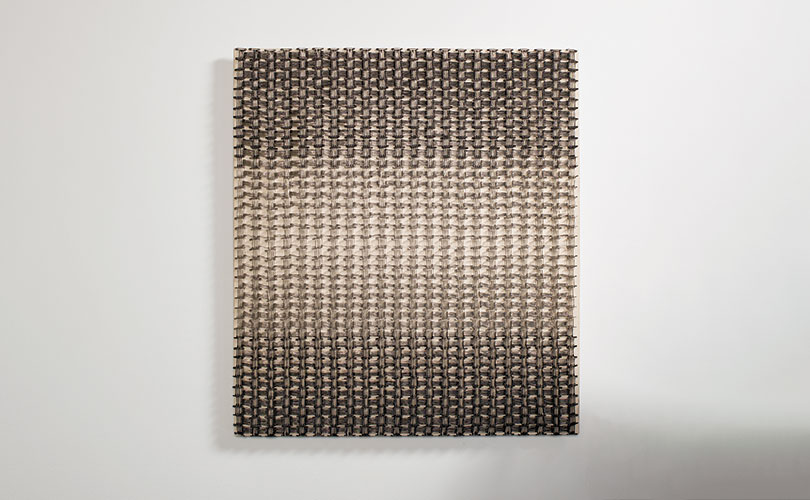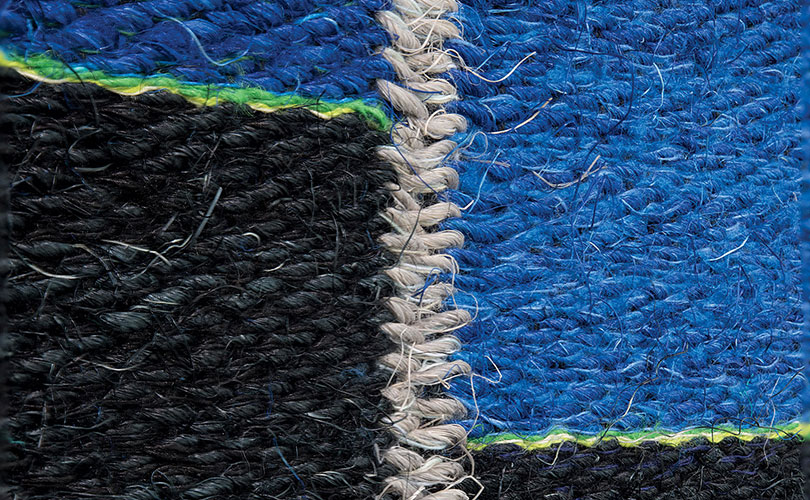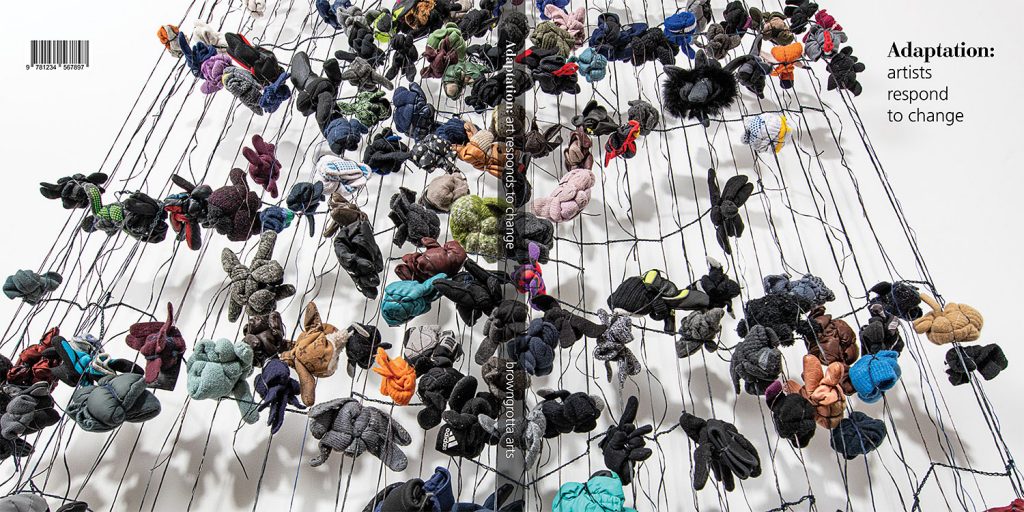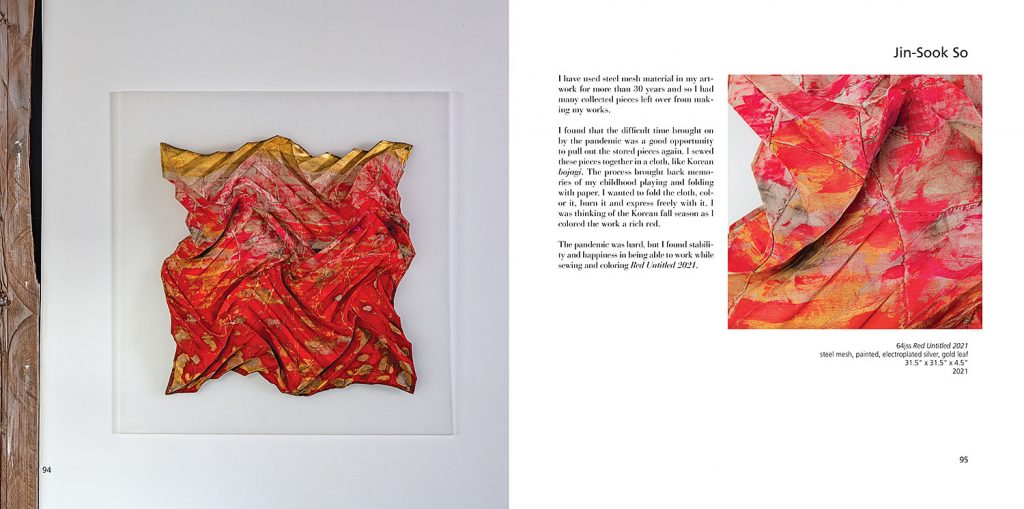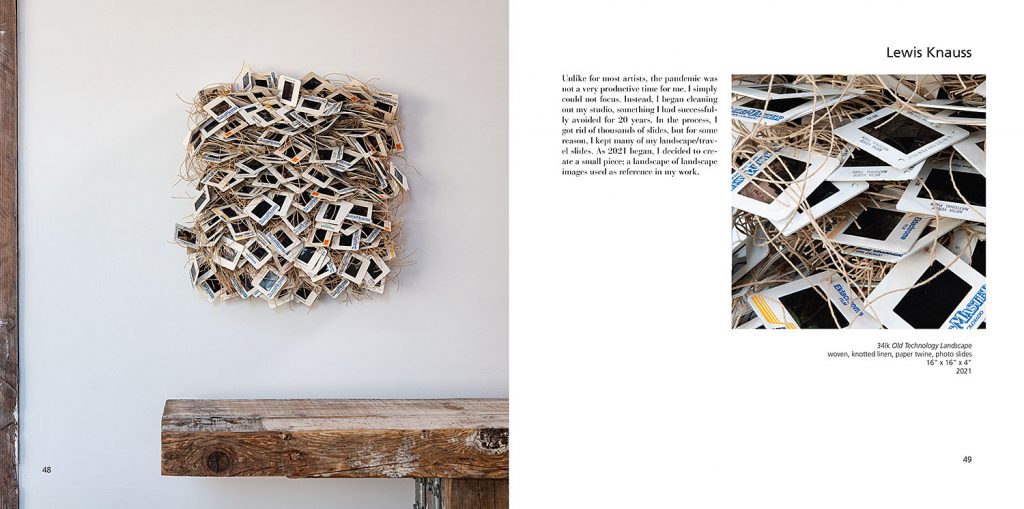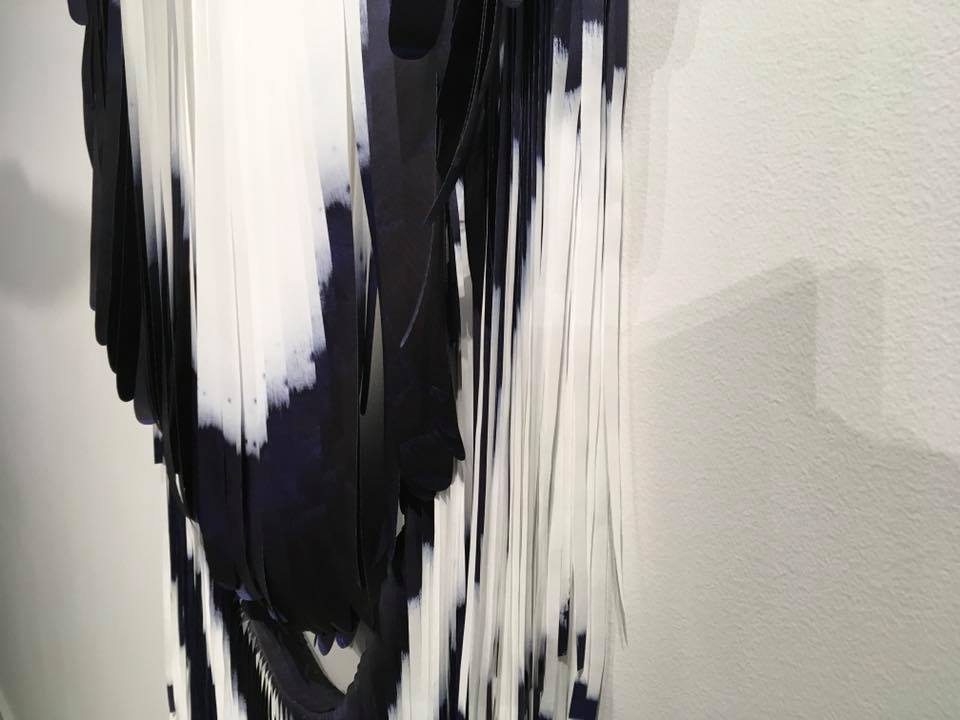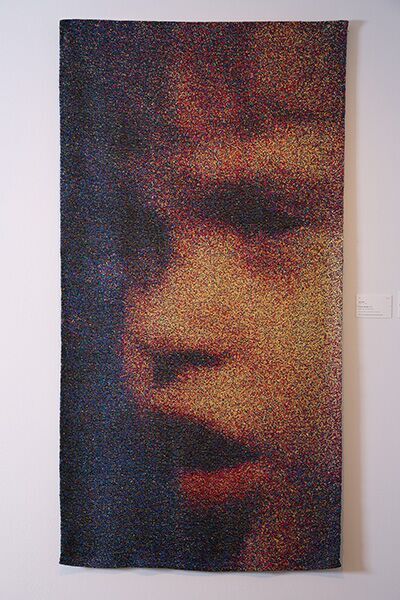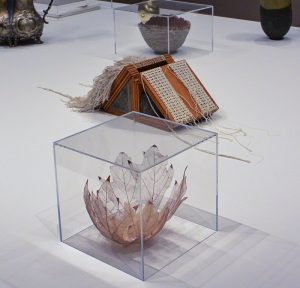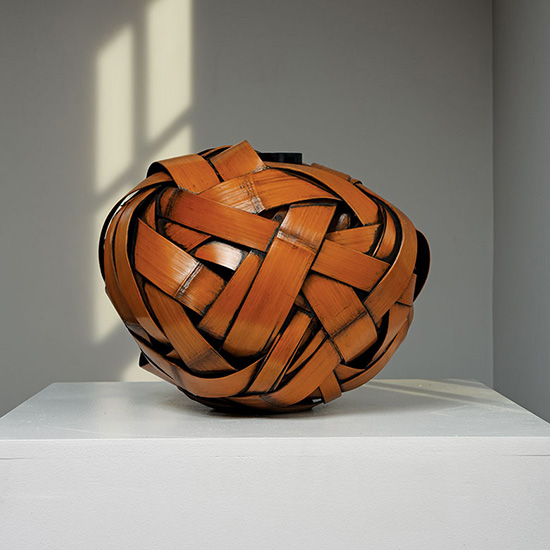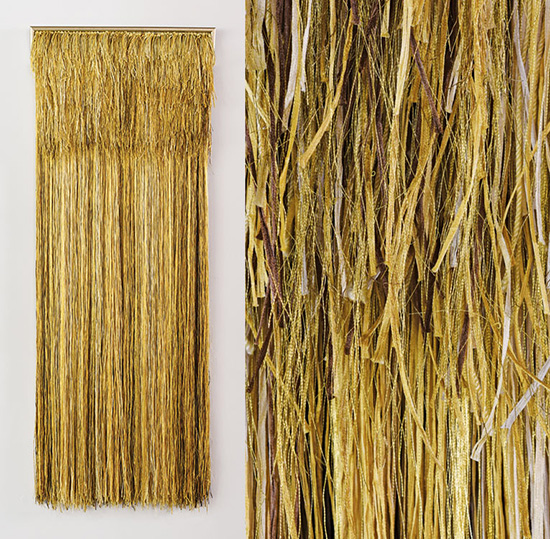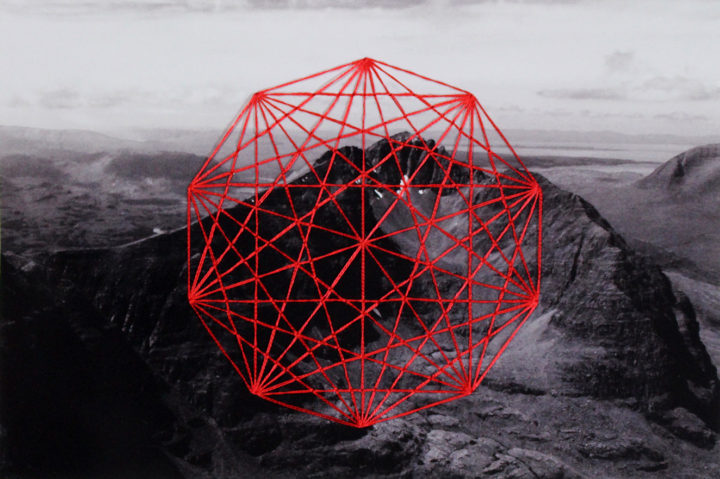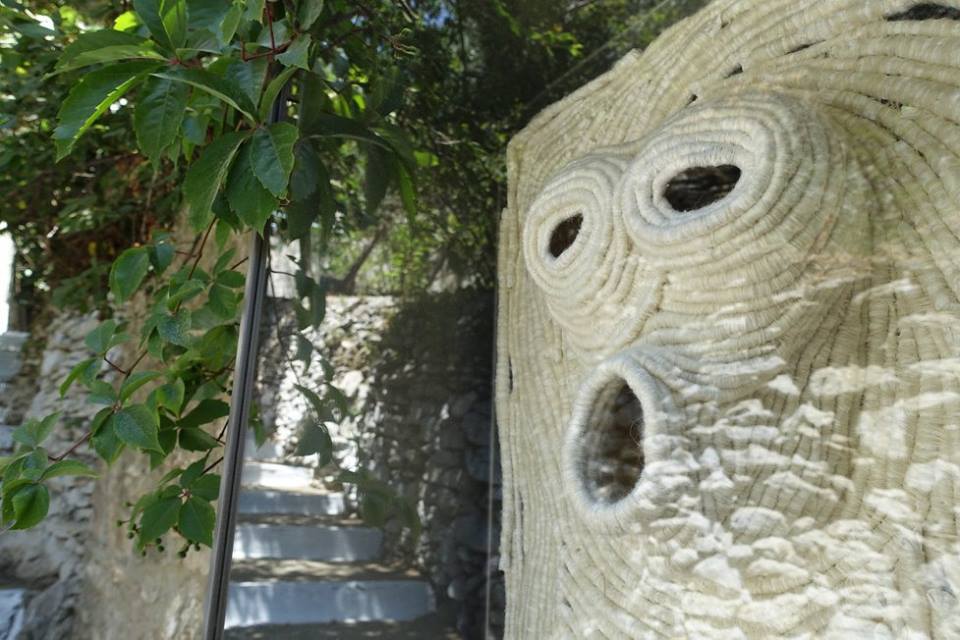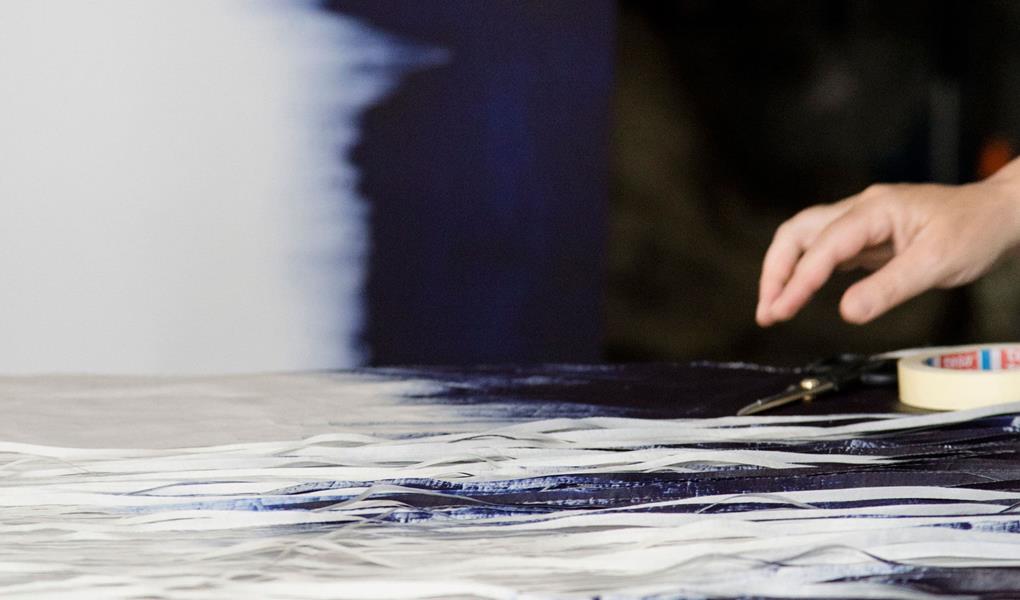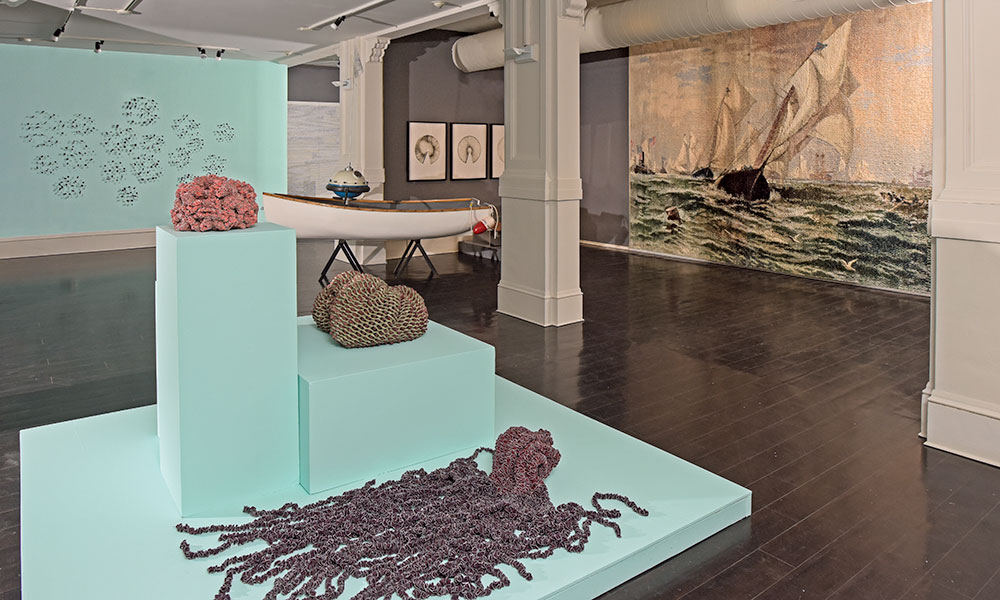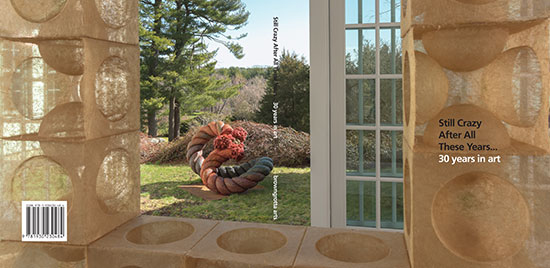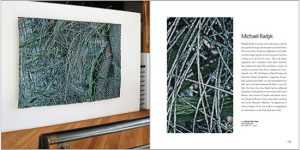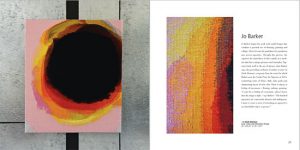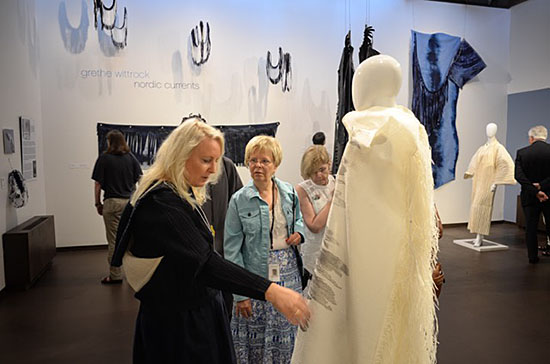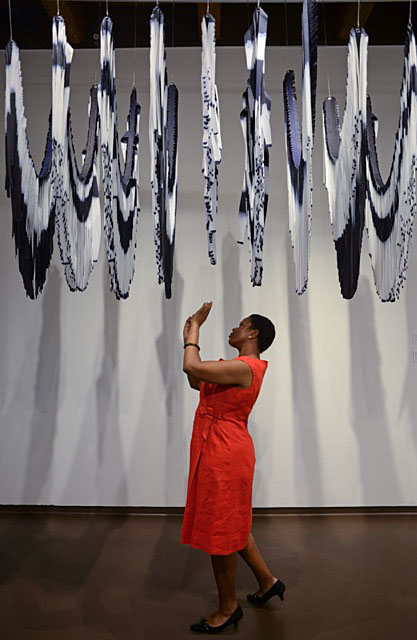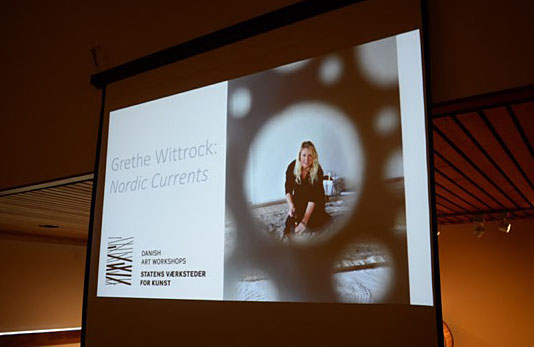
4hsh.1 Wall Hanging, Hiroyuki Shindo, linen, handspun and handwoven, indigo dye, 69″ x 17″ , 1995. Photo by Tom Grotta
It turned out so nice, we decided to do it twice. Three years ago we curated an exhibition at browngrotta arts exploring the inspirations shared by artists in Japan and the Scandinavian countries, Sweden, Finland, Norway, and Denmark. We uncovered so many interesting stories and artistic references among the artists we work with we’ve decided to revisit this topic again this winter at the Wayne Art Center in Wayne, Pennsylvania. Japandí Revisited: shared aesthetics and influences will open on December 7, 2024 and run through January 25, 2025.

The Ethel Sergeant Clark Smith Gallery at the Wayne Art Center is spacious and bright and an inviting space. Vistors to Wayne will see some familiar works alongside new ones, from Birgit Birkkjaer, Hiroyuki Shindo, and Naoko Serino. Japandí Revisited will also feature artists new to our Japandí assemblage, including Shoko Fukuda, Toshiko Takaezu, Aya Kajiwara, Kogetsu Kosuge, and Hiroko Sato-Pijanowski.
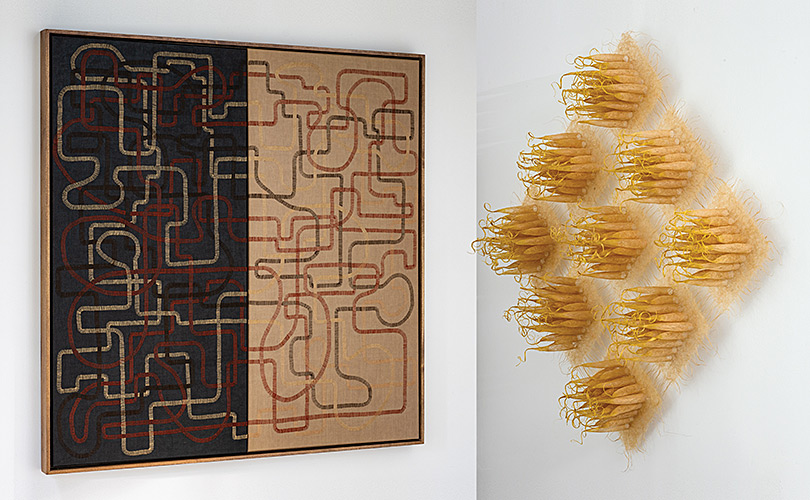
Naoko Serino, Generating 9, jute, 30″ x 30″ x 7″, 2014. Photos by Tom Grotta
Japandí in design is a fusion style that references shared aspects of Scandinavian and Japanese aesthetics. “It is the East-meets-West design movement. It blends Japanese artistic elements and wabi-sabi philosophy with Scandinavian comfort and warmth or hygge,” Shanty Wijaya, an interior designer and owner of AllPrace told Architectural Digest in 2023. “Both Japanese and Scandinavian design aesthetics are focused on simplicity, natural elements, comfort, and sustainability. It teaches us to find beauty in imperfection, form deep connections to the earth and nature, and enjoy the simple pleasures of life.”

There are four elements highlighted in Japandí Revisted — natural materials and sustainability, minimalism, exquisite craftsmanship and, as Wijaya notes, similarities between the Japanese concept of wabi-sabi and the Scandinavian concept of hygge. A respect for materials is found in both cultures. Danish artist Jane Balsgaard spent time in Japan in 1993 and 1998, preparing for exhibits there. Works of paper and twigs were the result. In her work, white paper often contrasts the dark color of the willow twigs. “Another element in [Balsgaard’s] works that has connection to Japan,” writes Mirjam Golfer-Jørgensen, “is the skeleton, that partly frames the paper, partly combines with the hollows in the constuction, and gives another character to the paper that with a lightness that creates a contrast towards to the hollows.” (Influences from Japan in Danish Art and Design 1870 – 2010, Mirjam Golfer-Jørgensen, Danish Architectural Press, 2013.)
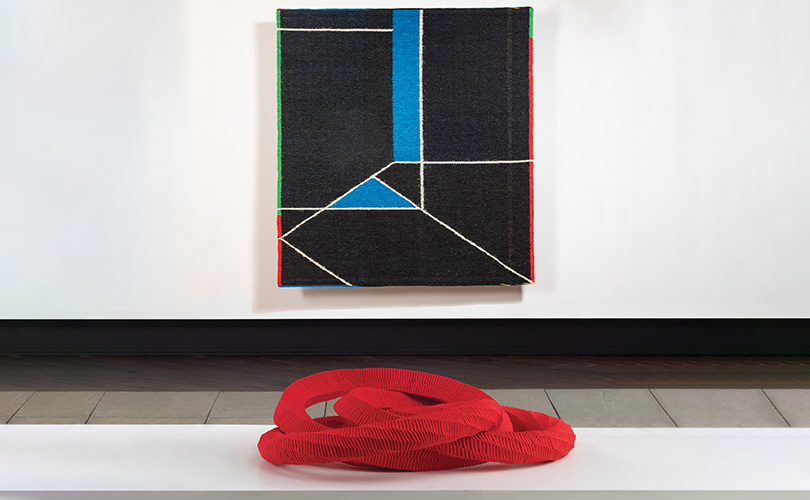
14kn Large Interlacing – R, Keiji Nio, nylon fiber, 54″ x 54″ x 15.5″, 2004. Photo by Tom Grotta
These cultures share is an affinity for purity, minimalism, and simplicity. Danish artist Grethe Wittrock’s work includes expanses of twisted paper strands in single colors — minimal and simple yet powerful expressions of what Finnish Designer Alvar Aalto called “the language of materials.” Wittrock observed the similar appreciation for minimalism firsthand when she traveled to Japan and studied with Japanese paper makers and renowned indigo dyer, Shihoko Fukomoto. “I started to uncover what Nordic sensibilities are by living abroad,” Wittrock says. “I lived in Kyoto, and saw an aesthetic in Japanese design similar to the Nordic tradition. You could say that there is an agreement that less is more. As they say in the Nordic countries ‘even less is even more.’” Gudrun Pagter is another Danish artist whose abstract works in primary colors reflect the modernism for which Scandinavia is known. “From the exotic and foreign land we find an aesthetically common understanding of a minimalist idiom,” Pagter says, “an understanding of the core of a composition — that is, cutting off everything ‘unnecessary.’”
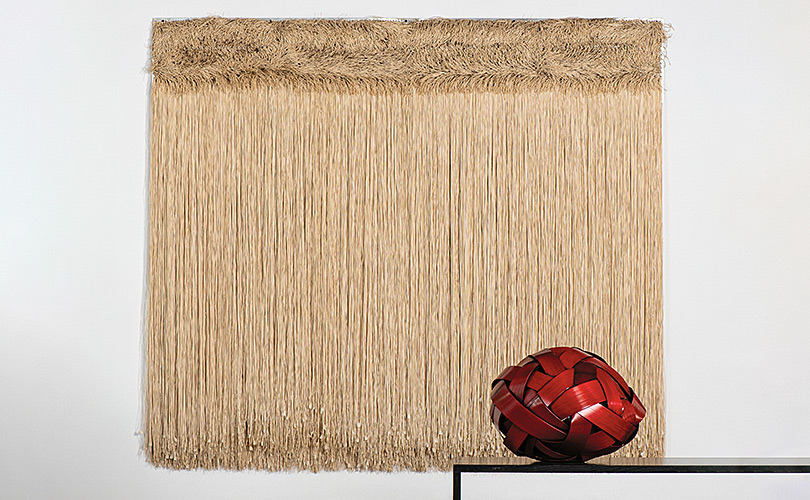
Jiro Yonezawa, 100jy Red Fossil 20−4, bamboo, urushi laquer, 22.5” x 21.25” x 21”, 2020. Photo by Tom Grotta
Meticulous craftsmanship is another element heralded in Japandí. Stainless steel fibers are masterfully incorporated into the work of three of the artists in this exhibition. Agneta Hobin of Finland weaves the fine threads into mesh, incorporating mica and folding the material into shapes — fans, strips, and bridges. Jin-Sook So’s work is informed by time spent in Korea, Sweden, and Japan. She uses transparent stainless steel mesh cloth, folded, stitched, painted and electroplated to create shimmering objects for the wall or tabletop. The past and present are referenced in So’s work in ways that are strikingly modern and original. She has used steel mesh to create contemporary Korean pojagi and to re-envision common objects — chairs, boxes and bowls. Kyoko Kumai of Japan spins the fibers into ethereal, silver landscapes.
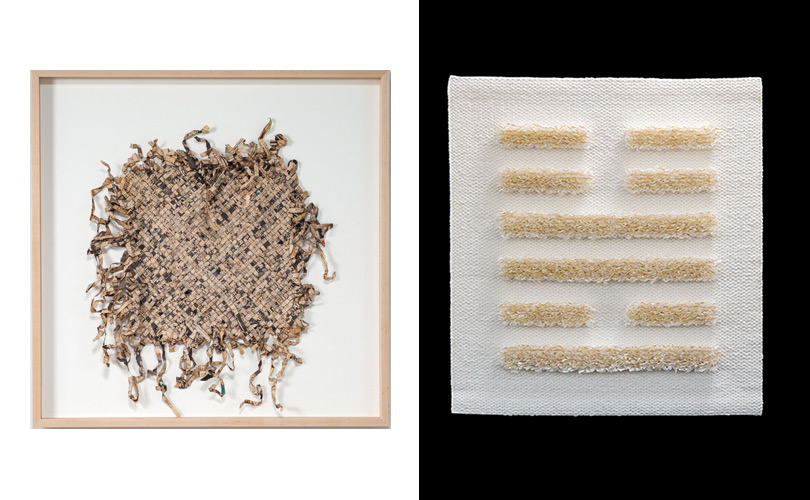
Eva Vargö, 6ev No. 55 (Book of Changes), linen, thread, paper strings, gold leaves, 31.75” x 29.375” x 1.5,” 2019. Photo by Tom Grotta
Several artists in the Japandí exhibition evidence an appreciation for repurposing materials as wabi-sabi envisions. Toshio Sekiji’s works are made of newspapers from Japan, India and the US and even maps from Jerusalem. Paper is a material that creates an atmosphere as well as art. Eva Vargö, a Swedish artist who has spent many years in Japan, describes how washi paper, when produced in the traditional way, has a special quality — light filters through paper from lamps and shoji screen doors creates a warm and special feeling, in keeping with the appreciation of the imperfect embodied in wabi-sabi and wellness and contentment in hygge.
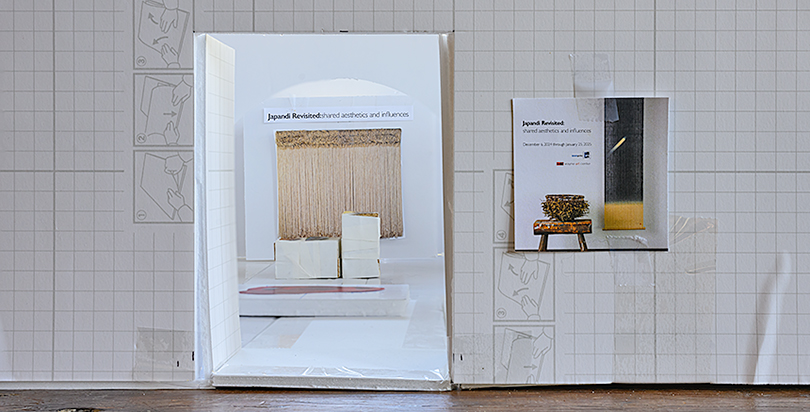
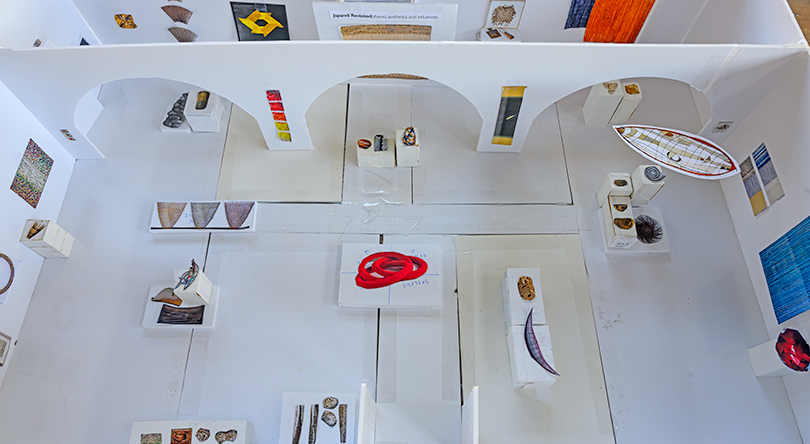
We hope you can make it to Pennsylvania this winter!


